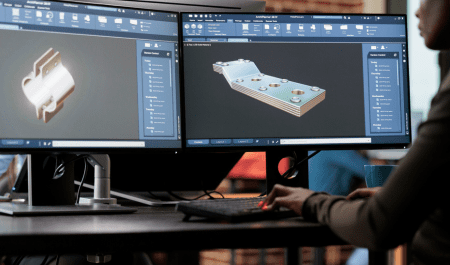
Additive manufacturing, or 3D printing, has revolutionized the production of custom parts, and among its most advanced technologies, Stereolithography (SLA) stands out for its exceptional precision and outstanding surface finish. At Induplast, we are always on the lookout for solutions that bring value to our clients. That’s why we’ve dedicated a section of our blog to 3D printing solutions, where we explore different technologies such as FDM, Fusion-based additive manufacturing, Stereolithography, Fiber-reinforced filament manufacturing, and SLS technology. Today, we explore how SLA technology can complement existing solutions like machining and FDM or SLS 3D printing. Let’s dive in!
What is SLA 3D Printing?
SLA 3D printing uses photopolymerization of liquid resins with an ultraviolet laser to cure the material layer by layer until the final part is formed. This process allows the creation of complex geometries with unmatched precision and excellent detail definition.Advantages of SLA Technology
- High dimensional accuracy: Capable of reproducing fine details with tight tolerances.
- Superior surface finish: The resulting parts have a smooth surface, ideal for functional prototypes or parts that require a high-quality appearance.
- Wide variety of materials: Resins can be selected based on specific properties such as thermal resistance, flexibility, or stiffness.
- Ideal for prototyping and validation: Thanks to its speed and quality, SLA is perfect for proof-of-concept before final production using machining or injection molding.







